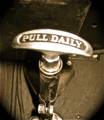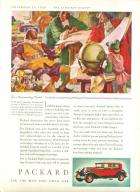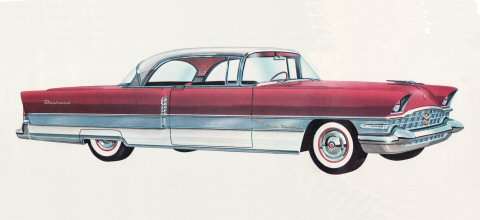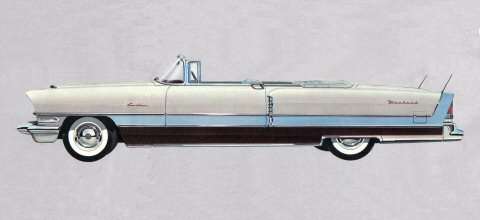|
Re: coating coolant passages in block and head of 1930 engine
|
||||
|---|---|---|---|---|
|
Forum Ambassador

|
My personal opinion is that is not a good idea. Wouldn't you be insulating the metal from the cooling effect of the water? Something in the deep recesses of my mind doens't like this approach.
Posted on: 2008/5/14 21:25
|
|||
|
||||
|
Re: coating coolant passages in block and head of 1930 engine
|
||||
|---|---|---|---|---|
|
Home away from home

|
Randy,
The argument seems to go that the increased thickness and insulating properties of the paint would effect heat transfer to very a small degree, while the benefit of having open and clean passageways would be enormous. From a mechanical standpoint this makes sense, as long as the heat doesn't cause the paint/coating to peel and block the smaller passages. Tom
Posted on: 2008/5/14 22:00
|
|||
|
||||
|
Re: coating coolant passages in block and head of 1930 engine
|
||||
|---|---|---|---|---|
|
Forum Ambassador
|
Well, I'm the most vocal proponent of this, here and on the AACA forums. I learned this from a noted restorer and I know of severl others who believe strongly in this practice, and have been doing it for over 20 years with no ill effect. The practice is based on the premise that you are having the block and heads chemically stripped, not just auto parts store hot tanked. There is a big difference in the outcome. The auto parts store treatment degreases the parts, the chem-stripping cleans them to a fair-thee-well, the parts come back a bright silver color and the cooling passenges are perfectly clean--which also means they are bare cast iron, ready to rust again with the slightest provocation. I get the block (and heads and pans and anything else that doesn't move) back from the strippers, mix up a small batch of DP-90epoxy primer (PPG), it comes in many colors, most of us use the green color for engine work. I apply it with a brush to the rough cast sections of the block, inside and out and especially the cooling passenges. This involves taping off freeze plug holes and cover areas (straight eights), pouring the epoxy primer in and rotating the engine on the stand, even rotating it end-to-end using the cherry picker to insure coverage in unseen areas. Then we peel off the tape and sop up the excess. I know of Packard, Auburn, Duesenberg,Cadillac and other engines that were rebuilt over 20, 25 years ago and they are fine. I drove one in Warren in for the Packard centennial in that torture-parade and it ran cool as a cucumber. You still need to have a good radiator core that isn't clogged and a good pump and hoses and distribution tube, if so equipped.
The epoxy paint does not impede the heat transfer appreciably, and it staves off the re-corrosion of the bare iron cooling passenges.
Posted on: 2008/5/15 7:08
|
|||
|
||||
|
Re: coating coolant passages in block and head of 1930 engine
|
||||
|---|---|---|---|---|
|
Home away from home

|
Mr Pushbutton,
Thanks tons for the info. I remembered your contributions over at AACA, that is what the info I was referring to. I am sorry if you had to repost your information. It seems like a very good idea, and I would like to try it. Unfortunately, I can't seem to find an online supplier of DP-90, and was wondering if folks had tried anything else. Eastwood makes a 2 part primer in gray that I was thinking should work. Thanks again, Tom
Posted on: 2008/5/15 9:24
|
|||
|
||||
|
Re: coating coolant passages in block and head of 1930 engine
|
||||
|---|---|---|---|---|
|
Forum Ambassador
|
DP-90 is a PPG product. These days the EPA has clamped down on who buys what from the distributor. You can get around that if you know someone who runs a body shop or repair facility that is aleady a customer with the supply house. Some supply house clerks will (nudge, nudge, wink,wink) make a cash sale under an exsisting customer's account, not that I would be party to such a thing.
Don't know about other brands, I like PPG because it's what has worked in the past and they are a huge multinational company with extensive testing facilities and they make a good product. Any DuPont equivilent would be good. Name brand stuff, used by the greater workaday world of auto repair. In your area: Tasco Auto Color #7 4327 South 1st #106 Austin, TX 78745 (512) 441-4774 Tasco Auto Color #2 2601 McHale Court #150 Austin, TX 78758 (512) 926-1893 Smithville Auto Parts 208 Olive Street Smithville, TX 78957 (512) 237-4667
Posted on: 2008/5/15 10:45
|
|||
|
||||
|
Re: coating coolant passages in block and head of 1930 engine
|
||||
|---|---|---|---|---|
|
Home away from home

|
Thanks tons for the info. I will give Tasco a call.
Tom
Posted on: 2008/5/15 13:41
|
|||
|
||||
|
Re: coating coolant passages in block and head of 1930 engine
|
||||
|---|---|---|---|---|
|
Home away from home

|
Don't forget that you can coat the inside of the engine with Glyptal, it'll help with oil runoff down to the pan. I plan on doing this to my 327.
Posted on: 2008/5/16 2:34
|
|||
|
||||
|
Re: coating coolant passages in block and head of 1930 engine
|
||||
|---|---|---|---|---|
|
Forum Ambassador
|
I coat the inside with epoxy primer, just like the exterior surfaces, that does the same job as the Glyptal.
Posted on: 2008/5/16 8:10
|
|||
|
||||
|
Re: coating coolant passages in block and head of 1930 engine
|
||||
|---|---|---|---|---|
|
Home away from home

|
What about exhaust and intake ports? Are those coated with anything?
Posted on: 2008/5/16 10:06
|
|||
|
||||








